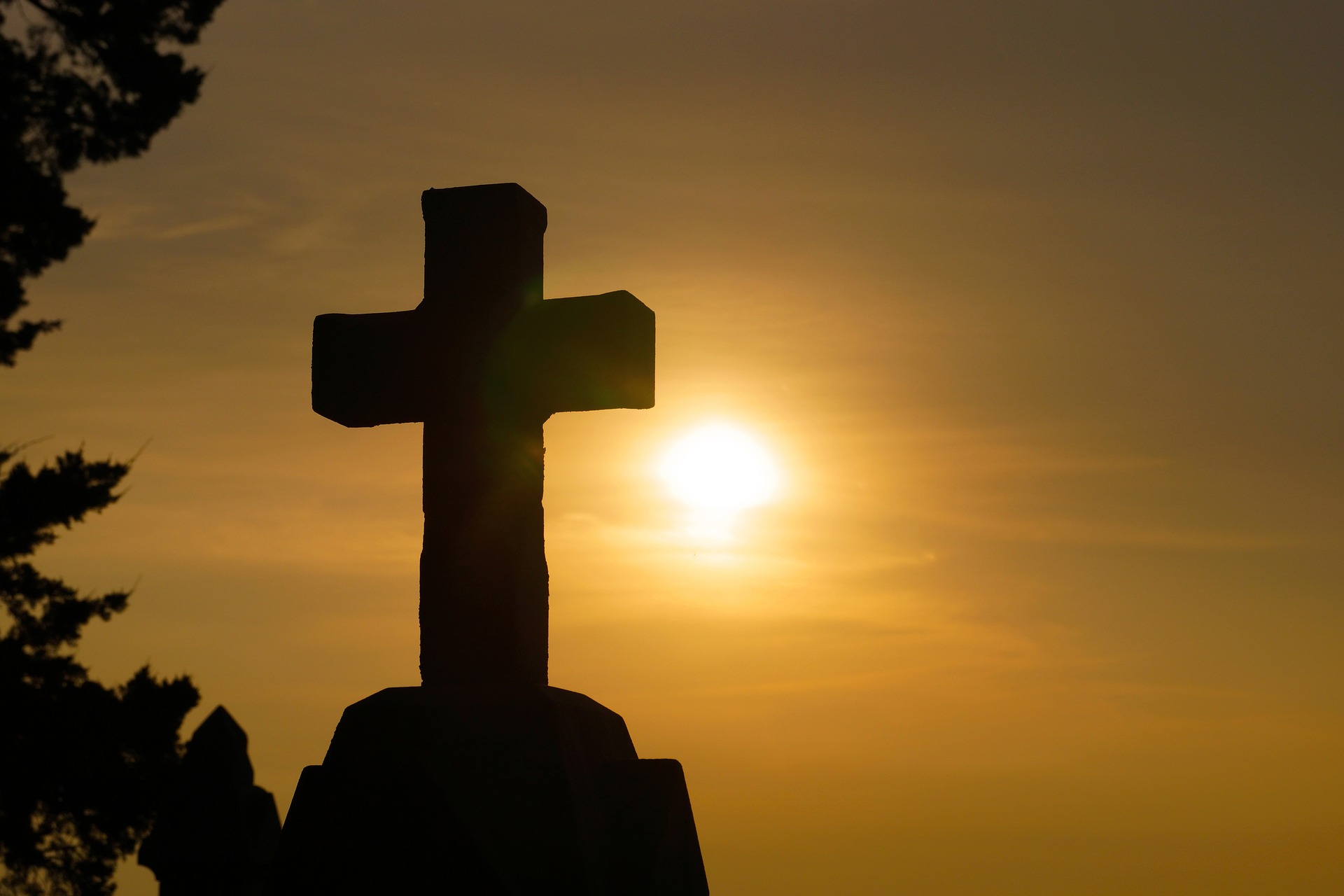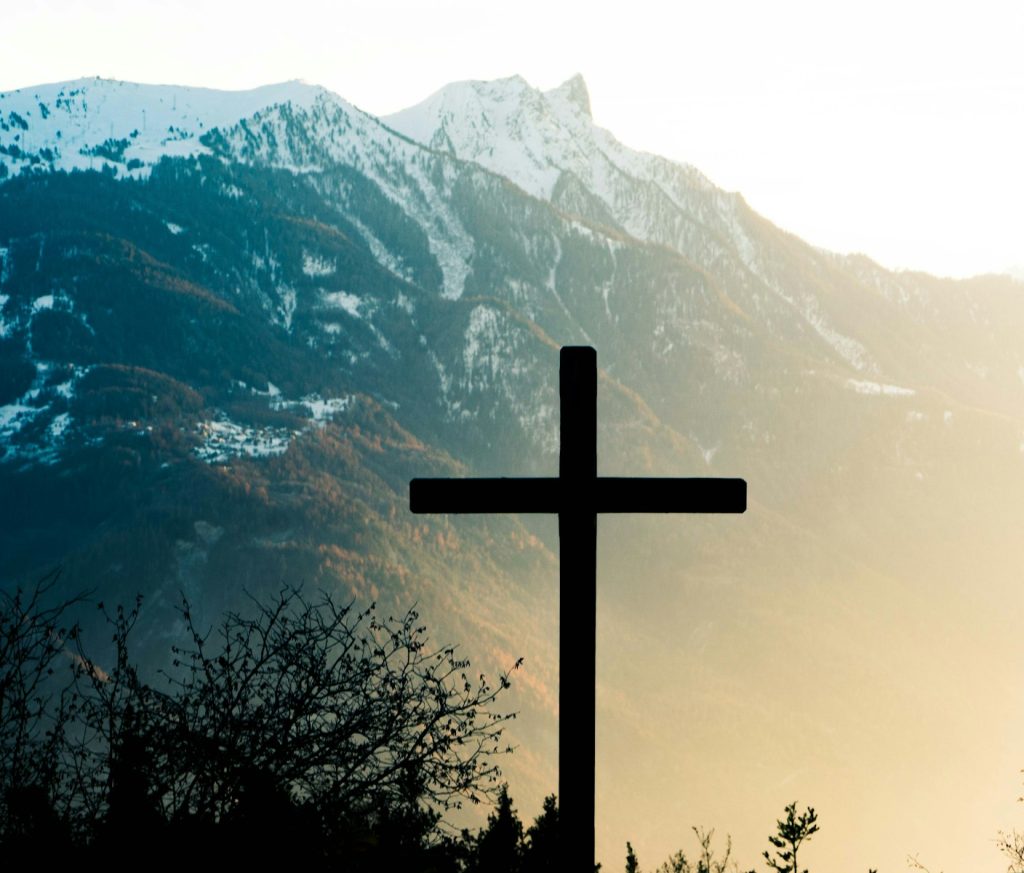Seeing Crosses: Spiritual Significance and Interpretations

Hey there, amazing readers! 🖐️ Just a quick note: yes, we know there are a lot of ads here. Trust us, we get it—it’s not the prettiest look, but they help us keep this blog alive and kicking. Those pesky little ads cover the costs of all the behind-the-scenes magic, from hosting and tech stuff to creating content we hope you’ll love.
We’re committed to delivering quality posts, and your support (even just sticking around despite the ads) means everything to us. So, bear with us, and thanks for helping us keep the good vibes rolling. Now, on to the fun stuff! 😉
TRANSLATE BUTTON AT THE END OF THE ARTICLE
The symbol of the cross is a universal icon that transcends religious, cultural, and historical boundaries.
It appears in various forms and contexts, carrying profound spiritual significance for countless people around the world.
Whether as a religious emblem, an architectural design, a personal experience, or a piece of art, encountering crosses can evoke deep emotions and contemplations.
In this article, we will embark on a journey to explore the multifaceted meanings and interpretations of encountering crosses in diverse contexts.
Our aim is to unravel the spiritual significance behind this symbol and shed light on the different ways it manifests in our lives.
From the traditional Christian symbolism to its presence in other cultures and even its appearance in the natural world, the cross holds a unique place in human history and spirituality.
The purpose of this article is to delve into the rich tapestry of meanings that surrounds the cross symbol, helping readers gain a deeper understanding of its significance and the various ways it resonates with people from different backgrounds.
By examining how crosses appear in different aspects of life, we hope to provide insight into the profound impact they can have on our spiritual journeys and the broader human experience.
Whether you’re a devout believer, a curious seeker, or simply intrigued by the symbolism of crosses, join us as we unravel the mystery and depth of this iconic symbol.
The Cross Symbol Across Cultures
The cross symbol has an extensive historical and cultural significance that spans across various civilizations and belief systems.
It has evolved and adapted to different contexts, each contributing to its multifaceted meanings.
Here, we will explore its presence in Christianity, Judaism, ancient civilizations, and contemporary cultures:
1.
Christianity:
The Crucifixion: In Christianity, the cross is most commonly associated with the crucifixion of Jesus Christ.
It symbolizes his sacrifice for the redemption of humanity’s sins.
The crucifix, featuring Jesus on the cross, is a central religious symbol for Christians worldwide.
Variations: Within Christianity, there are various forms of the cross, such as the Latin cross (✝), the Greek cross (☩), and the Celtic cross (a combination of a cross and a circle).
Each of these variations carries its unique symbolism and history.
2.
Judaism:
Star of David: While not a traditional cross, the Star of David, a six-pointed star, holds its own significance in Judaism.
It represents the Jewish faith and heritage and is a prominent symbol on the Israeli flag.
Historical Overlaps: Throughout history, there have been connections between the cross and Jewish symbolism.
Some scholars suggest that the Christian cross may have been influenced by Jewish religious artifacts.
3.
Ancient Civilizations:
Egypt: The ankh, a cross-like symbol with a loop at the top, was an ancient Egyptian hieroglyph representing life and immortality.
Norse Mythology: In Norse culture, the “Odin’s Cross” or “Odin’s Sun” was a symbol used by the Vikings, believed to represent the sun and offer protection.
Buddhism: The swastika, a symbol resembling a cross with arms bent at right angles, is considered a sacred symbol in Buddhism, representing auspiciousness and well-being.
4.
Contemporary Cultures:
Secular Use: In contemporary, secular contexts, the cross is often used as a design element in fashion, jewelry, and art.
It can signify a connection to spirituality without necessarily being tied to a specific religious belief.
Tattoos and Body Art: Many people get cross tattoos as expressions of their faith, personal beliefs, or as a tribute to loved ones.
Humanitarian and Medical: The Red Cross, with its distinctive cross on a white background, is a globally recognized symbol for humanitarian aid and medical assistance.
The cross symbol’s enduring presence across cultures and time underscores its adaptability and power as a symbol.
Its meanings have evolved and expanded far beyond its origins, making it a symbol that resonates with people from various backgrounds and belief systems.
Whether representing faith, life, or protection, the cross continues to be a source of inspiration and contemplation for people worldwide, transcending cultural and religious boundaries.

Christian Symbolism
Christian Symbolism of the Cross: Christ’s Sacrifice and Redemption
In Christianity, the cross is an iconic symbol representing Christ’s sacrifice and redemption, and its symbolism carries profound religious and spiritual significance.
1.
Crucifixion and Sacrifice: The cross primarily symbolizes the crucifixion of Jesus Christ.
According to Christian theology, Jesus willingly gave his life on the cross to atone for humanity’s sins.
His crucifixion is seen as the ultimate act of selflessness and love, where he suffered and died for the salvation of humanity.
The vertical beam of the cross symbolizes the connection between God and humanity, while the horizontal beam represents the unity of all people through Christ’s sacrifice.
2.
Redemption and Salvation: The cross is a powerful symbol of redemption and salvation.
Christians believe that through Jesus’ death and resurrection, humanity has been offered the opportunity to be reconciled with God and find forgiveness for their sins.
The cross, therefore, serves as a reminder of God’s grace, mercy, and the promise of eternal life through faith in Christ.
3.
Symbol of Hope: For Christians, the cross is not merely a symbol of suffering and death but also a symbol of hope.
It represents the triumph of good over evil and life over death.
Christ’s resurrection from the dead, celebrated during Easter, signifies the victory over sin and the promise of new life.
Seeing a Cross in a Christian Context: Religious and Spiritual Messages
Encountering a cross in a Christian context carries significant religious and spiritual messages for believers:
1.
Reminder of Faith: When Christians see a cross, it serves as a visual reminder of their faith in Jesus Christ as their savior and the central figure of their religious beliefs.
It prompts reflection on the core teachings of Christianity.
2.
Reverence and Worship: Crosses are often found in churches and places of worship, where Christians gather for communal prayer and worship.
Seeing a cross in this context inspires reverence and a sense of connection with God during religious ceremonies.
3.
Personal Reflection: For individuals, seeing a cross can be a moment of personal reflection and prayer.
It may be a source of comfort during challenging times or a reminder to live according to the teachings of Christ.
4.
Symbol of Identity: Wearing a cross as jewelry or displaying it in one’s home can be an outward expression of one’s Christian identity and commitment to the faith.
It signals to others one’s beliefs and values.
5.
Inspiration for Acts of Compassion: The cross’s message of love, sacrifice, and redemption often inspires Christians to engage in acts of compassion, charity, and service to others, following Christ’s example.
The cross in a Christian context is laden with religious and spiritual messages that center around Christ’s sacrifice, redemption, hope, and the call to faith and action.
It serves as a powerful symbol of the core beliefs and values of Christianity, reminding believers of their relationship with God and their commitment to following the teachings of Jesus Christ.
Crosses in Nature and Everyday Life
Cross shapes can be found in various aspects of nature, often inspiring wonder and contemplation:
1.
Flowers: Some flowers exhibit cross-shaped petals, such as the common wildflower, the purple violet (Viola sororia).
These natural crosses have been interpreted symbolically as signs of faith, purity, and love.
2.
Crystals: Crystals and minerals, such as the Staurolite crystal, form naturally occurring cross shapes.
Staurolite crystals are often referred to as “Fairy Crosses” due to their cruciform shape.
In folklore, they are believed to bring protection and good luck.
3.
Celestial Events: Cross-like patterns can be observed in celestial events.
For instance, during a solar eclipse, when the moon partially covers the sun, the resulting image can resemble a cross.
Such occurrences can evoke awe and spiritual reflection.
Encounters with Crosses in Everyday Life
People often encounter crosses in their daily lives, and these encounters can hold special significance or inspire personal reflections:
1.
Roadside Memorials: Crosses are commonly used as symbols at roadside memorials to mark the locations of accidents or tragedies.
These crosses serve as reminders of the fragility of life and can evoke thoughts of remembrance and prayers for those who have passed away.
2.
Art and Architecture: Crosses are prevalent in art and architecture, appearing in stained glass windows, sculptures, and other decorative elements in churches and religious buildings.
People who visit these places often find themselves surrounded by cross symbols, which can deepen their spiritual experience.
3.
Jewelry and Fashion: Many individuals wear cross-shaped jewelry as a personal expression of their faith, beliefs, or as a fashion statement.
These pieces often hold sentimental value and can spark conversations about one’s spirituality.
4.
Natural Landscapes: Cross-like formations can occasionally be seen in natural landscapes, such as a cross-shaped tree silhouette against the sky or a river crossing through a valley.
These sights can be serendipitous and inspire contemplation.
5.
Coincidental Encounters: Some people report experiencing coincidental encounters with crosses in their everyday lives.
Whether it’s finding a cross-shaped cloud, seeing a cross in the pattern of a tile floor, or noticing one in the arrangement of objects, these moments can feel like signs or messages from the universe.
These encounters with crosses in everyday life highlight the ways in which this symbol can unexpectedly manifest, inviting individuals to pause, reflect, and find meaning in the ordinary and extraordinary moments of their existence.
Whether through the contemplation of natural occurrences or the symbols that surround us, the cross can serve as a source of inspiration and reflection in our daily lives.
Personal Experiences and Interpretations
Here are some personal testimonies and interpretations from individuals who have encountered crosses, showcasing the diverse ways people perceive and derive meaning from these encounters:
1.
Sarah’s Reflection on a Sunset Cross:
Sarah, a nature enthusiast, recalls a vivid experience during a hike at sunset. “As I reached the peak of the trail, I saw the sun setting behind a distant mountain, and the sky formed a perfect cross with fiery colors.
For me, that cross symbolized the beauty and serenity of nature, reminding me of the divine presence in the world.”
2.
Mike’s Roadside Memorial Encounter:
Mike shares his encounter with a roadside memorial. “I drive by a roadside cross every day on my way to work.
It’s a poignant reminder of the fragility of life.
I see it as a call to be more mindful and compassionate towards others and to cherish the time we have.”
3.
Maria’s Cross in a Hospital Room:
Maria, a nurse, describes a cross in a patient’s room. “I once cared for a patient who had a small cross hung on the wall in her room.
She told me it was her source of strength and comfort during her illness.
It made me realize how symbols like the cross can provide solace in challenging times.”
4.
David’s Cross Tattoo:
David shares the story behind his cross tattoo. “I got a cross tattoo on my wrist as a reminder of my faith.
Whenever I look at it, it’s a reaffirmation of my beliefs and a commitment to living a life aligned with my values.”
5.
Emma’s Cloud Formation Cross:
Emma describes a unique cloud formation. “One summer afternoon, I looked up and saw a cloud formation that resembled a cross.
It felt like a message from the universe, reminding me to have faith and stay grounded in times of uncertainty.”
6.
Ahmed’s Interfaith Perspective:
Ahmed, from a diverse cultural background, reflects on the cross symbol. “As a Muslim, I view the cross as a symbol of love and sacrifice.
It reminds me of the shared values of compassion and selflessness that exist across different faiths.”
These personal experiences and interpretations illustrate the diverse ways in which people encounter and find meaning in crosses.
For some, it’s a connection to nature or a symbol of faith, while for others, it serves as a reminder of life’s impermanence or a source of strength during difficult times.
The cross, as a symbol, has the capacity to resonate with individuals from various backgrounds and belief systems, offering them a canvas on which to paint their own unique interpretations and spiritual connections.

Spiritual Messages and Guidance
Many individuals believe that seeing a cross can be a message or sign from the spiritual realm, offering guidance, comfort, or a sense of divine presence.
While interpretations may vary, there are some common themes associated with these beliefs:
1.
Divine Presence: Some see the cross as a direct sign of divine presence or a reminder of the spiritual realm’s existence.
Encountering a cross can evoke feelings of connection with a higher power.
2.
Guidance: For some, seeing a cross may be interpreted as a form of guidance or direction.
It may encourage individuals to reflect on their life choices or seek spiritual clarity.
3.
Comfort and Reassurance: Cross sightings can offer comfort and reassurance during difficult times.
It may be interpreted as a sign that one is not alone in their struggles and that there is hope or support from a higher source.
4.
Reminders of Values: The cross can serve as a reminder of core values such as love, compassion, selflessness, and forgiveness.
It may prompt individuals to embody these virtues in their daily lives.
Interpreting and Applying These Messages
Interpreting and applying spiritual messages derived from encountering a cross is a highly personal and individualized process.
Here are some insights into how individuals can approach these messages:
1.
Self-Reflection: Take time to contemplate the significance of the cross in your life.
Consider the circumstances and emotions surrounding the encounter.
Ask yourself what message or guidance you perceive.
2.
Prayer and Meditation: Engage in prayer or meditation to seek further insights.
Many people find solace and clarity through these practices, allowing them to connect with their spiritual beliefs and gain a deeper understanding of the message received.
3.
Journaling: Keep a journal of your experiences with crosses and your interpretations of these encounters.
Over time, patterns or recurring themes may emerge that provide clarity and guidance.
4.
Seek Guidance from Spiritual Leaders: If you are uncertain about the message you have received, seek guidance from a trusted spiritual leader, mentor, or advisor who can offer insights and perspectives from a spiritual or religious standpoint.
5.
Act on Inspiration: If the message from the cross inspires you to make positive changes in your life, whether in relationships, personal growth, or service to others, take action.
Embody the values and guidance you perceive to align your actions with your spiritual beliefs.
6.
Share and Connect: Discuss your experiences and interpretations with like-minded individuals or within your spiritual community.
Sharing insights can provide support and foster a sense of community and belonging.
7.
Embrace the Mystery: Recognize that the interpretation of spiritual messages is subjective and may remain a mystery.
Embrace the uncertainty and trust that the encounter with a cross has had a meaningful impact on your spiritual journey, even if the message is not entirely clear.
In essence, seeing a cross as a message from the spiritual realm is a deeply personal and intuitive experience.
The interpretation and application of these messages can be a powerful tool for personal growth, spiritual development, and finding a sense of purpose and connection in one’s life.
Crosses in Dreams and Meditation
Seeing crosses in dreams and during meditation is a phenomenon that has been reported by individuals across different cultures and belief systems.
These encounters can carry profound spiritual and symbolic significance, often leading to personal insights and guidance.
Here, we’ll delve into this phenomenon and share experiences of individuals who have received guidance or insights through these encounters:
1.
Crosses in Dreams:
Symbolic Dreams: Many people report having dreams where crosses play a significant role.
These dreams may involve seeing a cross in various contexts, such as during a journey, in a place of worship, or even as part of a larger narrative.
The cross in dreams is often interpreted as a symbol of guidance, protection, or a message from the subconscious mind.
Guidance and Comfort: Some individuals have experienced dreams involving crosses during challenging times in their lives.
These dreams can provide comfort and reassurance, offering a sense that they are being watched over or guided through difficult circumstances.
2.
Crosses During Meditation:
Meditative Symbols: In meditation, individuals may encounter cross-like symbols or shapes within their inner visions or mental landscapes.
These symbols can vary in form, from simple crosses to more intricate designs.
Meditators often interpret these symbols as representations of balance, harmony, or spiritual alignment.
Insights and Clarity: During meditation, some individuals have reported gaining insights or clarity related to their life path, decisions, or challenges after encountering a cross symbol.
These insights are often seen as coming from a deeper, intuitive level of consciousness.
Experiences of Guidance and Insights
1.
Julia’s Dream Cross:
Julia, going through a period of personal struggle, had a dream where she saw a cross on a hill bathed in light.
In the dream, she felt an overwhelming sense of peace and guidance.
This dream inspired her to make positive changes in her life, leading to a profound transformation.
2.
Michael’s Meditative Vision:
During a meditation session, Michael saw a radiant, pulsating cross-like symbol at the center of his mind’s eye.
This vision filled him with a deep sense of inner peace and purpose.
Subsequently, he found the clarity to pursue a long-held aspiration, resulting in a fulfilling career change.
3.
Linda’s Cross on a Troubled Night:
Linda, who was experiencing a period of grief after a loved one’s passing, had a dream where she saw a cross floating above a calm, serene lake.
This dream provided her with solace and hope, helping her navigate the grieving process and find strength in her faith.
These personal experiences illustrate how encounters with crosses in dreams and during meditation can offer individuals guidance, comfort, and clarity during various life situations.
While interpretations may vary, these encounters often leave a lasting impact on individuals, inspiring them to make positive changes and find deeper meaning in their spiritual journeys.
Cultural and Religious Crosses
Cross symbols come in various forms, each with its own distinct cultural and religious significance.
Here, we’ll highlight some of the most well-known cross variations and explain the unique meanings associated with them:
1.
Latin Cross (✝):
Christianity: The Latin cross is the most widely recognized symbol of Christianity.
It consists of a vertical beam (the longer one) intersected by a horizontal beam (the shorter one) near the top.
It represents the crucifixion of Jesus Christ and serves as a powerful reminder of his sacrifice for the redemption of humanity’s sins.
The vertical beam symbolizes the connection between God and humanity, while the horizontal beam signifies unity among people through Christ.
2.
Celtic Cross:
Celtic Christianity: The Celtic cross is characterized by a circle, often surrounding the intersection of the vertical and horizontal beams of the Latin cross.
It has its origins in Celtic Christianity and is particularly associated with Ireland.
The circle is believed to represent eternity or the halo of Christ, while the cross itself symbolizes Christianity.
The Celtic cross is a unique blend of Christian and Celtic pagan symbols, reflecting the synthesis of these traditions.
3.
Orthodox Cross (☦):
Eastern Orthodoxy: The Orthodox cross, also known as the Russian cross or Eastern cross, features three horizontal crossbeams.
The top beam represents the inscription that Pilate placed above Jesus’ head on the cross, the middle beam is the standard horizontal bar, and the lower beam represents the footrest.
The slanted footrest is often seen as the lower end of a ladder, symbolizing the ascent of the soul to heaven.
4.
Ankh (☥):
Ancient Egypt: The Ankh, also known as the key of life or crux ansata, is an ancient Egyptian symbol resembling a cross with a loop at the top.
It represents life and immortality, often held by gods and pharaohs.
The loop is thought to symbolize eternal life, while the crossbar represents earthly existence.
The Ankh has transcended Egyptian culture and is sometimes used in modern spirituality and as a symbol of life.
5.
Tau Cross (T):
Christianity and Franciscan Order: The Tau cross resembles the letter “T” and is associated with the Franciscan Order founded by St.
Francis of Assisi.
It represents simplicity, humility, and the cross that St.
Francis embraced as a symbol of his faith and service to the poor.
The Tau cross is often used as a marker of dedication to a life of service and humility.
6.
Swastika (卐):
Hinduism, Buddhism, and Other Cultures: The swastika is an ancient symbol with arms bent at right angles, resembling a cross with a clockwise or counterclockwise rotation.
In Hinduism and Buddhism, it represents auspiciousness, well-being, and good fortune.
However, due to its association with the Nazis during World War II, the swastika has also been a symbol of hatred and evil in the West.
These various cross variations illustrate the adaptability and diversity of cross symbolism across different cultures and religious traditions.
Each cross carries its unique meanings and conveys distinct messages related to faith, spirituality, and cultural heritage.

Scientific and Psychological Perspectives
The phenomenon of seeing crosses, like other shapes and patterns, can often be explained through scientific and psychological processes.
Two common explanations are pareidolia and cognitive bias:
1.
Pareidolia:
Definition: Pareidolia is a psychological phenomenon where individuals perceive familiar patterns or shapes, such as faces, animals, or objects, in random or ambiguous stimuli, like clouds, rock formations, or stains.
Application: When individuals encounter random or complex arrangements of lines or objects, their brains may interpret them as cross shapes, especially if they are culturally or spiritually predisposed to recognize crosses.
This phenomenon is driven by the brain’s innate tendency to seek meaningful patterns even in chaotic or random information.
2.
Cognitive Bias:
Definition: Cognitive bias refers to systematic patterns of deviation from norm or rationality in judgment, often leading to perceptual distortions, inaccurate judgment, or what is colloquially called “seeing what one wants to see.”
Application: People who have a strong spiritual or religious belief in crosses may have a cognitive bias that leads them to notice cross symbols more frequently in their surroundings.
This bias can make them more inclined to interpret ambiguous shapes or patterns as crosses, reinforcing their belief in the symbol’s significance.
Balanced View:
1.
Spiritual Perspective:
Meaningful Encounters: From a spiritual standpoint, many individuals genuinely believe that seeing crosses holds profound significance.
They interpret these encounters as signs, messages, or moments of divine connection.
For them, the subjective experience and the personal meaning derived from seeing crosses are real and spiritually meaningful.
2.
Non-Spiritual Perspective:
Natural Phenomenon: From a non-spiritual perspective, the phenomenon of seeing crosses can be explained as a natural product of the human brain’s cognitive processes.
It’s a result of the brain’s tendency to find familiar patterns in random or complex stimuli, a phenomenon well-documented in psychology.
Cultural and Cognitive Influences: Cultural and cognitive influences play a significant role in shaping how individuals perceive and interpret symbols like crosses.
These influences may lead to confirmation biases and selective attention, reinforcing the belief in the significance of the symbol.
The phenomenon of seeing crosses can be understood from both spiritual and non-spiritual perspectives.
While some individuals genuinely believe in the spiritual significance of these encounters, scientific and psychological explanations like pareidolia and cognitive bias provide alternative viewpoints that emphasize the role of the human brain in shaping these experiences.
A balanced perspective acknowledges the diversity of human experiences and the complex interplay between belief systems, psychology, and perception.
Conclusion
In this article, we embarked on a journey to explore the spiritual meaning and significance of seeing crosses in various contexts.
We delved into the rich tapestry of cross symbolism, from its historical and cultural origins to its presence in different religions and belief systems.
We also examined how crosses appear in nature, everyday life, dreams, and meditation, offering personal testimonies and interpretations of these encounters.
We learned that the cross holds diverse meanings across cultures and religions, symbolizing themes like sacrifice, redemption, life, and unity.
Encountering a cross can carry religious and spiritual messages, offering guidance, comfort, and reassurance.
People perceive and derive meaning from these encounters in deeply personal ways, reflecting their beliefs, values, and life experiences.
Reflection
As you reflect on this exploration of the cross symbol, consider your own experiences and interpretations of encountering crosses in your life.
Have you ever had a moment where you saw a cross and felt a deep connection or received a message, whether spiritual or personal?
What did it mean to you?
How did it impact your beliefs or actions?
Remember that the significance of crosses is a deeply personal and individual experience, influenced by your cultural background, religious beliefs, and personal journey.
Whether you find meaning in the cross through faith, symbolism, or personal reflection, it serves as a powerful reminder of the enduring themes of love, sacrifice, and hope that resonate across the human experience.
May your encounters with crosses, whether in the world around you or within your own heart, continue to inspire and enrich your spiritual journey, guiding you toward a deeper understanding of yourself and the world.
FAQ
Here are seven frequently asked questions (FAQ) related to the topic of spiritual symbolism and the meaning of crosses:
1.
What is the origin of the cross as a religious symbol, and how has its meaning evolved over time?
Answer: The cross’s origin as a religious symbol can be traced back to ancient civilizations, including the Egyptians and Babylonians.
In Christianity, the cross symbolizes the crucifixion of Jesus Christ and the redemption of humanity’s sins.
Over time, its meaning has evolved to represent themes of sacrifice, love, hope, and unity, with various cross variations carrying unique interpretations.
2.
Are there specific rituals or ceremonies associated with crosses in various faiths, and what do they signify?
Answer: Yes, many faiths have rituals and ceremonies involving crosses.
In Christianity, the sign of the cross is often made during prayers or religious services, symbolizing the Holy Trinity.
In other cultures and religions, crosses may be used in rituals related to protection, blessings, or initiations, each signifying different spiritual aspects.
3.
How can one differentiate between seeing a cross as a meaningful sign and mere coincidence or pareidolia?
Answer: Differentiating between meaningful signs and coincidences can be challenging.
It’s essential to consider the context, personal feelings, and the frequency of such encounters.
Seeking guidance from spiritual leaders or mentors can also help individuals discern the significance of cross sightings.
4.
Do different variations of the cross, such as the Celtic cross or the Orthodox cross, have unique spiritual meanings, and if so, what are they?
Answer: Yes, different cross variations have distinct spiritual meanings.
For example, the Celtic cross blends Christian and Celtic symbolism, representing eternity and Christianity.
The Orthodox cross’s three horizontal beams symbolize various aspects of Christ’s crucifixion and the soul’s journey to heaven.
5.
Are there any cultural taboos or sensitivities related to the use or display of crosses in different parts of the world?
Answer: Yes, cultural sensitivities related to crosses can vary widely.
In some regions, the use or display of crosses may be seen as a sign of respect and faith, while in others, it could be considered inappropriate or offensive.
It’s essential to be aware of and respectful toward local customs and beliefs when using cross symbols.
6.
Can the meaning of a cross encounter change depending on the individual’s personal beliefs and spirituality?
Answer: Absolutely.
The meaning of a cross encounter is highly subjective and can vary significantly depending on an individual’s personal beliefs and spirituality.
What may be a sign of divine guidance for one person may have a different meaning or no significance at all for another.
7.
Are there contemporary movements or interpretations of the cross symbol that go beyond traditional religious contexts?
Answer: Yes, contemporary culture has seen the cross symbol used in various contexts beyond traditional religion.
Some may use it as a fashion statement or artistic expression, while others may employ it as a symbol of unity, love, or a commitment to certain values.
Its interpretation continues to evolve in modern society.
These FAQs can provide further insights into the complexities of cross symbolism and its diverse interpretations across cultures and belief systems.

Additional Resources
Here are some additional resources for readers interested in exploring the topic of spiritual symbolism and signs, including the symbolism of crosses:
Books:
“The Power of Symbols: A Guide to Symbols as a Form of Nonverbal Communication” by Hans Biedermann
This book provides a comprehensive exploration of symbols, including crosses, and their meanings in various cultural and religious contexts.
“Man and His Symbols” by Carl Jung
Carl Jung, a renowned psychologist, discusses the significance of symbols in human psychology and spirituality, shedding light on their role in dreams, art, and personal development.
“Symbols of Sacred Science” by René Guénon
René Guénon’s work delves into the spiritual symbolism found in various traditions and their interconnectedness, offering insights into the cross and other symbols.
Websites and Online Resources:
The Encyclopedia of Religious Symbols: Religious-Symbols.net
This online resource provides an extensive collection of religious symbols, along with explanations of their meanings and significance.
The Symbolism Wiki: Symbols.fandom.com
This wiki covers a wide range of symbols, including crosses, and offers detailed information about their origins and interpretations.
A Cross Symbolism Guide: Catholic.org
This Catholic-oriented guide explores the symbolism of the cross and its variations within Christian traditions.
The Swastika: A Symbol of Good Luck and Hate: United States Holocaust Memorial Museum
This online exhibition discusses the history and diverse meanings of the swastika, offering insights into its complex symbolism.
These resources provide a wealth of information for those interested in exploring the deep and diverse world of spiritual symbolism, signs, and their significance in various cultures and belief systems.

The Enlightenment Journey is a remarkable collection of writings authored by a distinguished group of experts in the fields of spirituality, new age, and esoteric knowledge.
This anthology features a diverse assembly of well-experienced authors who bring their profound insights and credible perspectives to the forefront.
Each contributor possesses a wealth of knowledge and wisdom, making them authorities in their respective domains.
Together, they offer readers a transformative journey into the realms of spiritual growth, self-discovery, and esoteric enlightenment.
The Enlightenment Journey is a testament to the collective expertise of these luminaries, providing readers with a rich tapestry of ideas and information to illuminate their spiritual path.
Our Diverse Expertise 🌟
While our primary focus is on spirituality and esotericism, we are equally passionate about exploring a wide range of other topics and niches 🌍📚. Our experienced team is dedicated to delivering high-quality, informative content across various subjects ✨.
To ensure we provide the most accurate and valuable insights, we collaborate with trusted experts in their respective domains 🧑🏫👩🏫. This allows us to offer well-rounded perspectives and knowledge to our readers.
Our blog originally focused on spirituality and metaphysics, but we’ve since expanded to cover a wide range of niches. Don’t worry—we continue to publish a lot of articles on spirituality! Frequently visit our blog to explore our diverse content and stay tuned for more insightful reads.






















